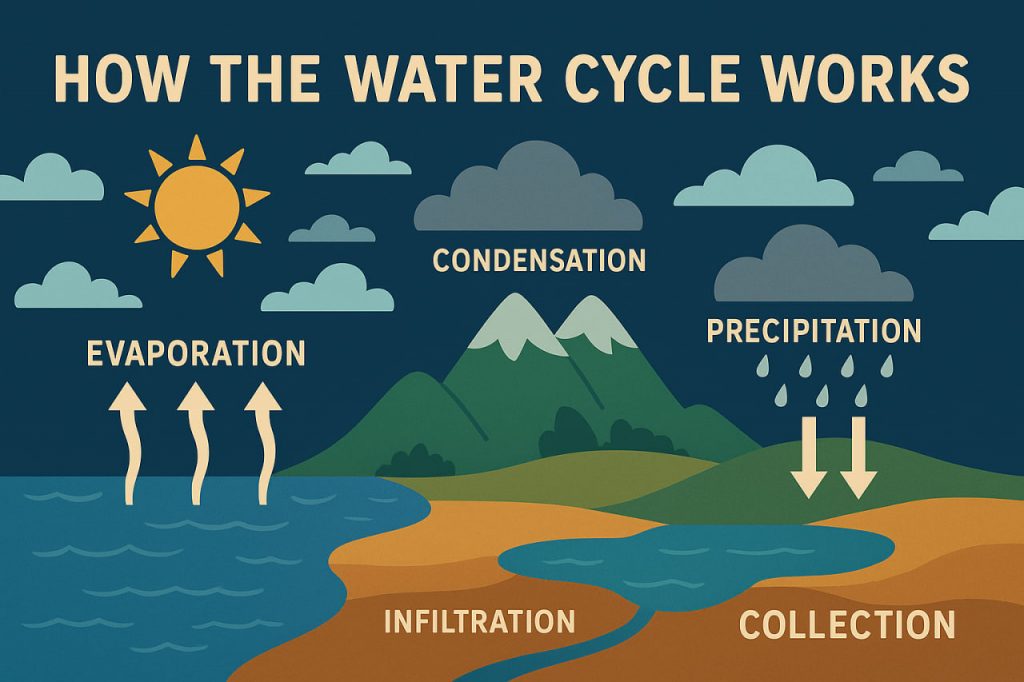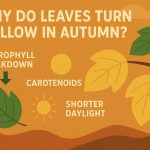The water cycle, also known as the hydrologic cycle, is the continuous movement of water on, above, and below the surface of the Earth. It plays a vital role in regulating climate, shaping landscapes, and sustaining all forms of life. Though water may seem to sit still in oceans or lakes, it is constantly moving through a vast and interconnected natural system.
The cycle includes several main processes: evaporation, condensation, precipitation, collection, and infiltration. These stages are powered primarily by solar energy and gravity.
Evaporation and Transpiration: Water Enters the Air
The water cycle begins when solar radiation heats up surface water from oceans, rivers, and lakes, causing it to evaporate into water vapor. Simultaneously, plants release water vapor through a process called transpiration, which occurs from their leaves.
Together, these processes are known as evapotranspiration and are responsible for moving large amounts of water into the atmosphere.
Condensation: Forming Clouds
As the water vapor rises into the atmosphere, it cools down due to lower temperatures at higher altitudes. This cooling causes the vapor to condense into tiny droplets, which cluster together to form clouds.
Condensation is a key process that makes weather patterns possible. The type and altitude of clouds formed affect the kind of precipitation that may follow.
Precipitation: Water Returns to Earth
When water droplets in clouds grow large and heavy enough, they fall back to Earth as precipitation. Depending on the temperature, this can occur as:
- Rain
- Snow
- Sleet
- Hail
Precipitation replenishes rivers, lakes, soil moisture, and underground reservoirs, making it a vital link in Earth’s freshwater supply.
Collection and Infiltration
Precipitated water collects in various surface bodies such as lakes, rivers, oceans, and even puddles. Some of this water infiltrates the ground, replenishing groundwater aquifers.
From here, water may:
- Be taken up by plants
- Flow back to oceans via rivers (surface runoff)
- Seep slowly into the soil (percolation)
This stage ensures the long-term storage and transport of water in ecosystems.
Glossary
- Evaporation – the process of liquid water turning into vapor
- Condensation – the change of water vapor into liquid droplets in the air
- Precipitation – water released from clouds as rain, snow, etc.
- Transpiration – water vapor released from plant leaves
- Infiltration – the process by which water enters the soil


